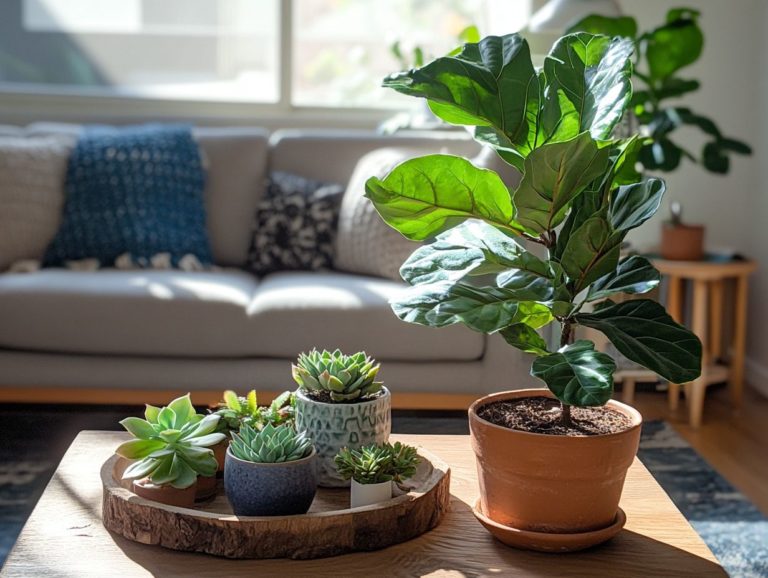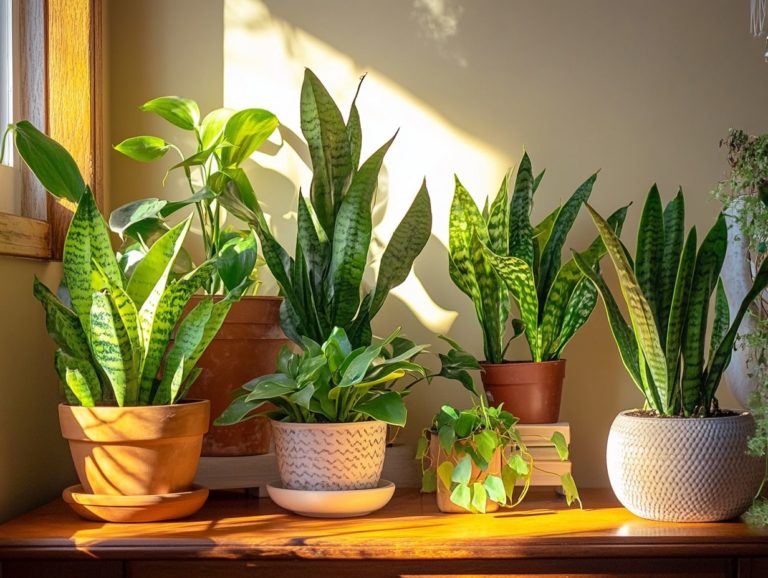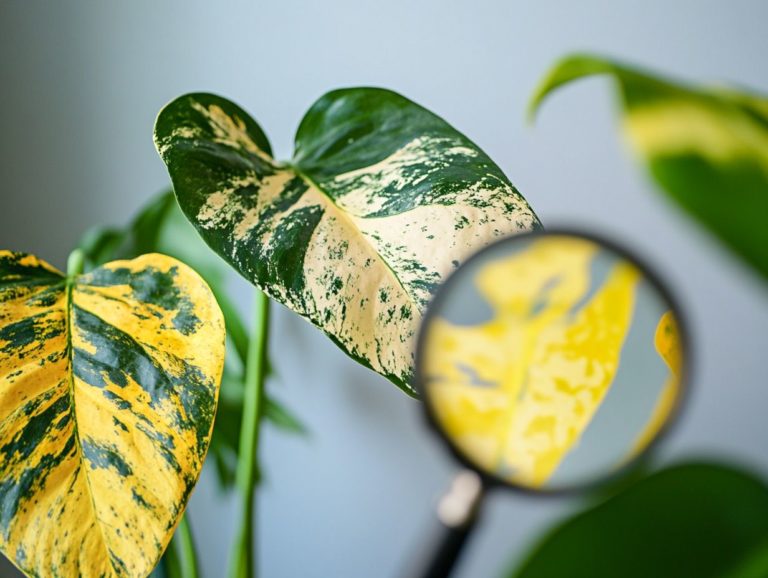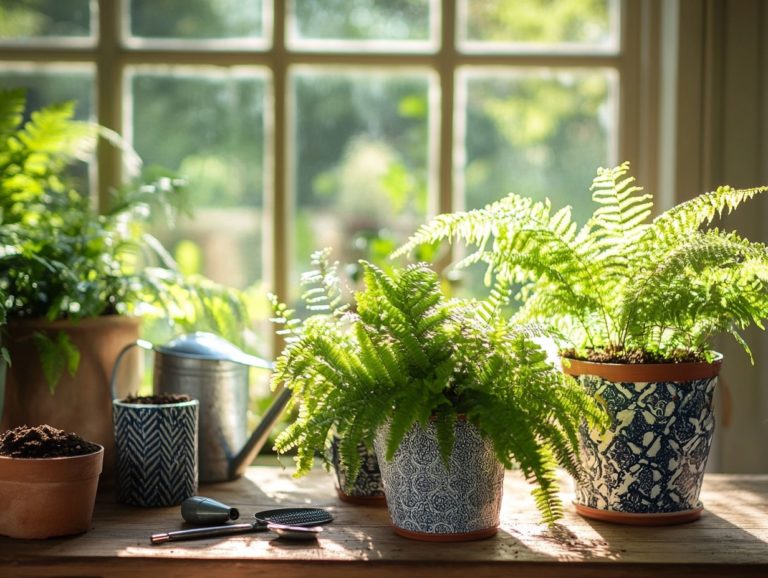What are the Signs of Pest Infestation?
Pest infestations can turn your cozy home into a source of worry. It’s important to recognize signs of pests early to protect your peace of mind and health.
Recognizing these unwelcome intruders is crucial for taking action. Visual indicators, unusual sounds, and lingering odors can signal their presence. Understanding what to look for can save you both time and money.
This article explores common pests, their health risks, effective prevention methods, and when to call in professionals. Prepare yourself to reclaim your space!
Contents
Key Takeaways:
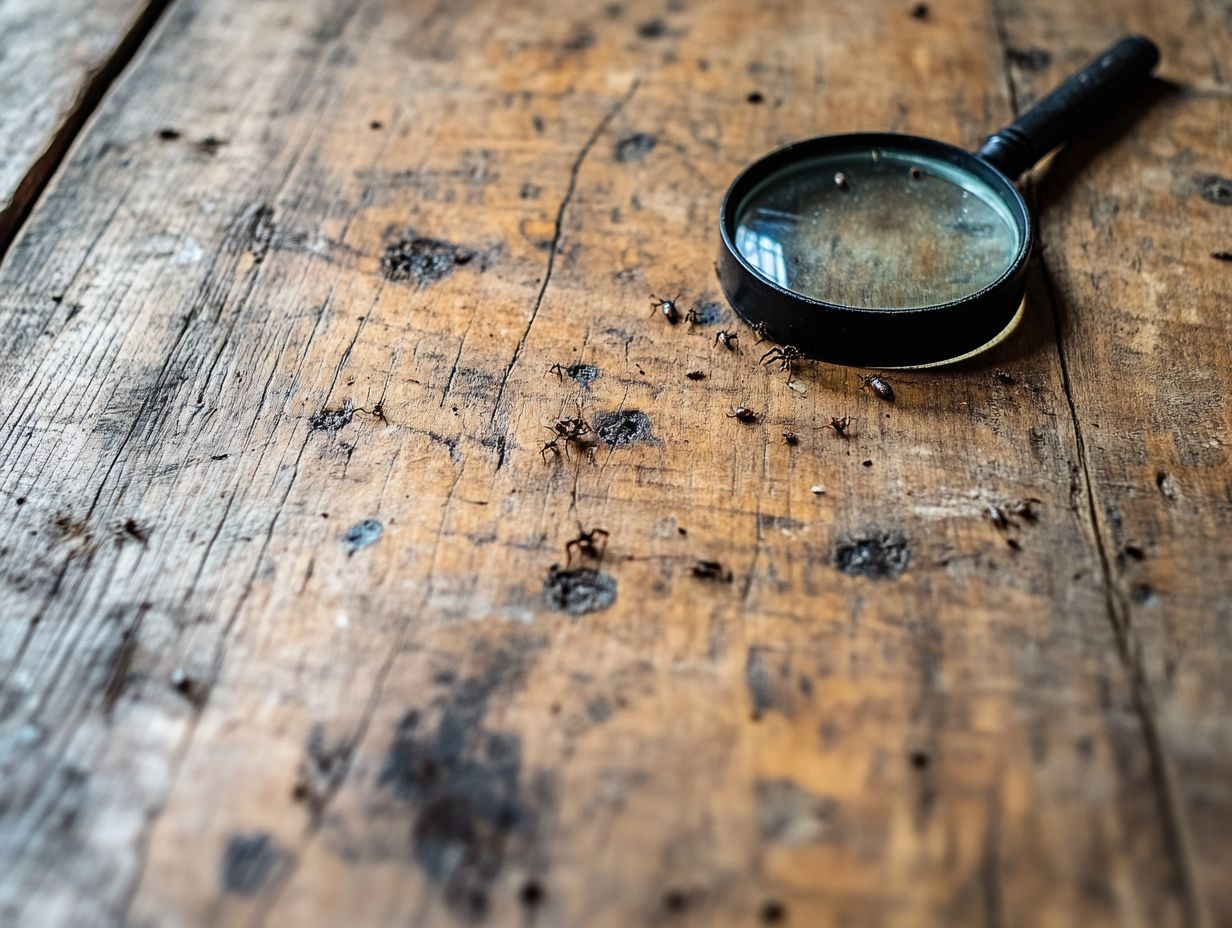
- Pest infestations can harm your health, so recognizing the signs early is crucial.
- Look for droppings, odd smells, and nests to detect pests.
- Use effective prevention methods, and know when to seek professional help.
Understanding Pest Infestation
Homeowners and business owners must quickly grasp pest infestations to protect their spaces! It’s not just about recognizing different pests; you also need to identify where they get in and what damage they can cause.
Pests like rodents, insects, and termites can threaten the safety and health of everyone in your space. Familiarize yourself with infestation signs and the conditions that allow pests to thrive, such as moisture and food sources.
Definition and Common Types of Pests
A pest is any unwanted organism that can invade homes, offices, or agricultural areas, causing damage and health risks. You may encounter common pests like cockroaches, ants, and flies, as well as rodents such as mice and rats. Each type has unique identification challenges and requires specific pest control strategies.
But the list doesn t stop there. Other notorious pests like termites and woodpeckers can pose significant threats. Termites are stealthy, silently munching away at wood and causing severe structural damage long before you realize they’re there.
Woodpeckers, though technically birds, can also wreak havoc by drilling into wooden structures in search of insects, leaving behind unsightly damage. By understanding these pests, you can streamline the identification process.
If you want to dive deeper into pest identification, resources like the University of Florida Libraries offer a wealth of research materials to help you recognize and combat these unwelcome intruders effectively.
Signs of Pest Infestation
Recognizing the signs of a pest infestation is essential for early intervention, helping you avert further damage to your home or office. Look for visible droppings near food storage, unusual odors hinting at insect activity, or nests tucked away in hidden spaces.
Be alert for signs like gnaw marks on wood or wires clear signals that urgent pest control measures are required.
Visual Clues and Physical Evidence

Visual clues and physical evidence are key signs of a pest infestation. You might notice droppings left by rodents or insects, nests in hidden corners, or visible damage to wood and insulation caused by pests like termites and carpenter ants.
For example, rodent droppings often resemble small dark grains of rice found near food sources or along walls. In contrast, insect droppings, like those from cockroaches, appear as small black specks. Nests can vary significantly, from finely chewed materials in a mouse nest to paper-like creations of wasps. Look for wood that seems hollow or has tiny, powdery holes common indicators of termite activity.
By recognizing these specific signs of pest damage, you can better assess the severity of the situation and take timely action.
Unusual Smells and Sounds
Unusual smells and sounds in your property can indicate a pest infestation, often revealing issues before any visible signs appear. Foul odors might come from decaying organic matter left by pests like rats or mice. Scratching or scurrying noises in your walls or ceilings serve as clear red flags of rodent activity that require immediate attention.
Recognizing these sensory cues is essential for maintaining comfort in your living environment and safeguarding your health and safety. The presence of pests can introduce various allergens into your home, potentially contributing to respiratory issues or skin irritations. Certain pests, such as cockroaches, can worsen asthma symptoms in sensitive individuals.
By promptly identifying unusual smells and sounds, you can intervene early, significantly reducing the risk of severe infestations and health complications. Stay vigilant for these indicators to preserve a healthy living space for yourself and your loved ones!
Health Risks Associated with Pest Infestation
Pest infestations can pose serious health risks, impacting not only the safety of your environment but also the well-being of everyone within it.
Pests like cockroaches and rodents can provoke allergies and asthma attacks, while also threatening food safety. This underscores the importance of addressing infestations quickly to minimize these health hazards.
Potential Health Consequences
Pest infestations can cause various health problems, ranging from minor annoyances to serious health concerns, depending on the pests involved. For instance, exposure to cockroaches might worsen asthma symptoms, while rodents can carry diseases that pose significant risks to you and your family.
Bed bugs are another nuisance; they can lead to itchy welts and secondary infections from scratching, disrupting your sleep quality. Then there are ants, especially fire ants, known for their painful bites and the allergic reactions they can trigger in sensitive individuals. Ticks, infamous for transmitting Lyme disease, can lead to long-term health issues if not treated promptly.
These reactions not only affect your physical health but can also elevate anxiety and stress levels for anyone living in infested environments. Understanding these potential health risks is essential for effective pest management and ensuring a safe living space for yourself and your loved ones.
Preventing and Managing Pest Infestation

Preventing and managing pest infestations is crucial for ensuring a safe and healthy environment in both your home and office. To effectively ward off unwanted guests, consider implementing these key strategies:
- Inspect your home regularly to catch pests early!
- Maintain a high standard of cleanliness.
- Seal any potential openings.
- Manage moisture levels.
These proactive measures can substantially decrease the chances of pests making an unwelcome entrance into your space.
Effective Prevention and Control Methods
Effective prevention and control methods are essential for managing pest infestations and ensuring safety in both residential and commercial spaces. Techniques like regular cleaning, sealing entry points, and using pest control sprays can significantly reduce the likelihood of unwanted pest activity.
Keeping a tidy environment not only decreases the allure for pests but also makes it easier for you to spot potential issues early on. By employing a combination of insecticides or rodenticides, along with natural remedies like diatomaceous earth or essential oil repellents, you can create a balanced approach to pest control.
Regular maintenance checks and timely disposal of food waste are crucial in making your spaces less inviting to pests. By integrating these strategies and raising awareness about the various pest control options available, you can cultivate not just a clean environment but one that inherently resists infestations.
Act now to protect your home! Consider contacting a pest control service or conducting your own inspection to keep your living space safe!
Professional Pest Control Services
Professional pest control services are essential for managing infestations and ensuring safety in your environment. They provide expert inspections, customized management plans, and effective restoration techniques to eliminate unwanted pests and prevent future issues.
With their assistance, you can reclaim your space with confidence and peace of mind.
When to Seek Professional Help
Understanding when to seek professional pest control assistance is crucial for effectively tackling infestation issues. Ongoing pest presence, an increase in droppings, or mysterious odors are clear indicators that it s time to call in the experts for a thorough evaluation.
You might also find damage to structural components think chewed wires or gnawed wood which can suggest a more serious infestation nearby. If you spot nests or see pests bustling in and out of your space, act now to safeguard your home!
Ignoring these alarming clues could lead to health risks from disease-carrying pests or extensive property damage resulting in costly repairs. By engaging pest control professionals, you ensure not just immediate relief but also long-term prevention of recurring infestations. It s a wise investment for any homeowner or business owner looking to protect their space.
Frequently Asked Questions
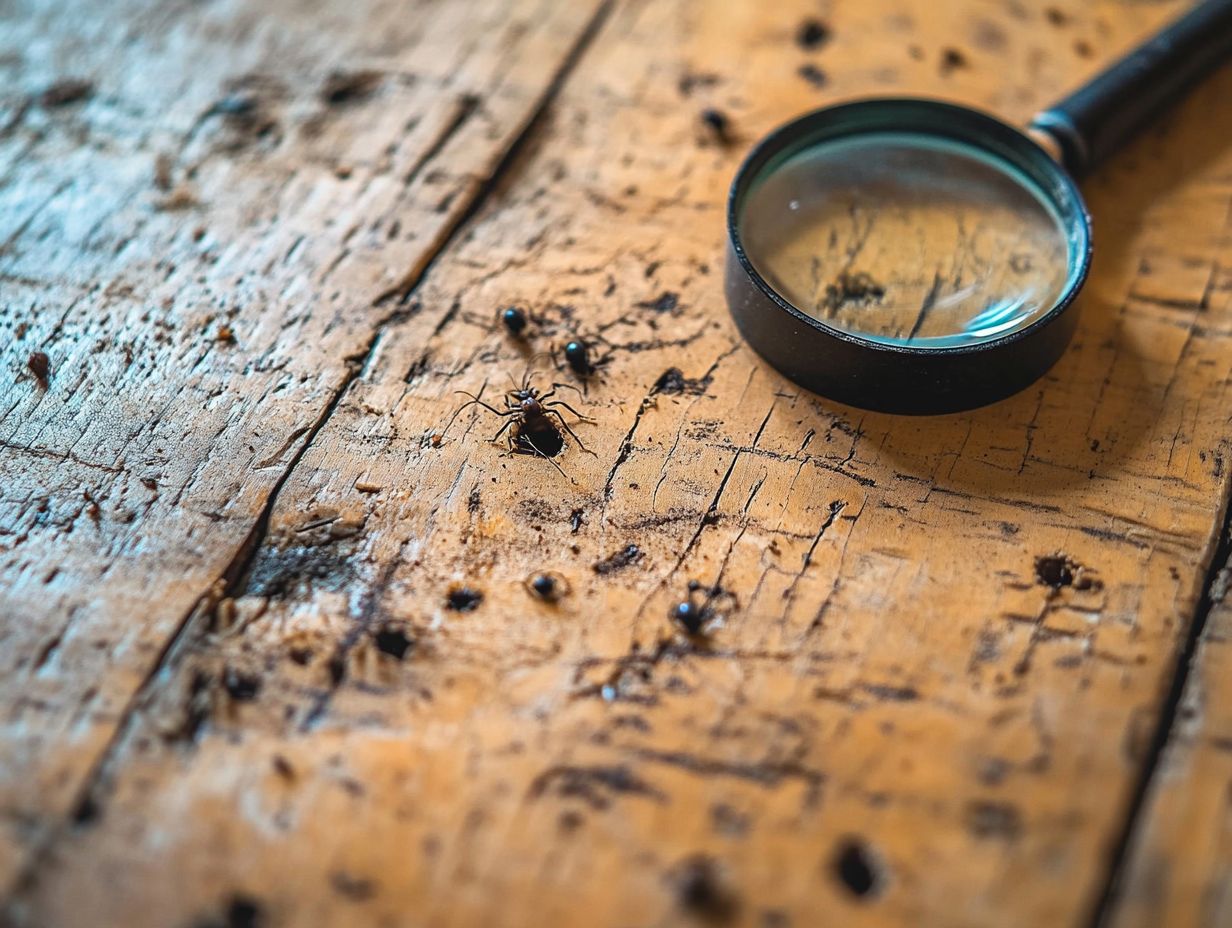
What are the Signs of Pest Infestation?
Pest infestations can be a major nuisance and cause damage to your home. Here are some signs to look out for:
What are some visual signs of pest infestation?
You may notice droppings, gnaw marks, or damage to food packaging. You might also see live pests or their shed skins.
What are some auditory signs of pest infestation?
Some pests, like rodents, make scratching or scampering noises in walls or ceilings. You may also hear buzzing or chirping from insects.
What are some odorous signs of pest infestation?
Pests can leave behind a strong, musty odor. Cockroaches, for example, can emit a distinct, oily smell.
What are some physical signs of pest infestation?
You may notice plants or furniture with holes or chew marks, or nests made from materials like paper or fabric.
What should I do if I suspect a pest infestation?
If you notice any of these signs, it’s best to contact a professional pest control service to identify and address the issue. DIY methods may not effectively eliminate the infestation.
Don t wait! Contact us today to reclaim your space from pests!

